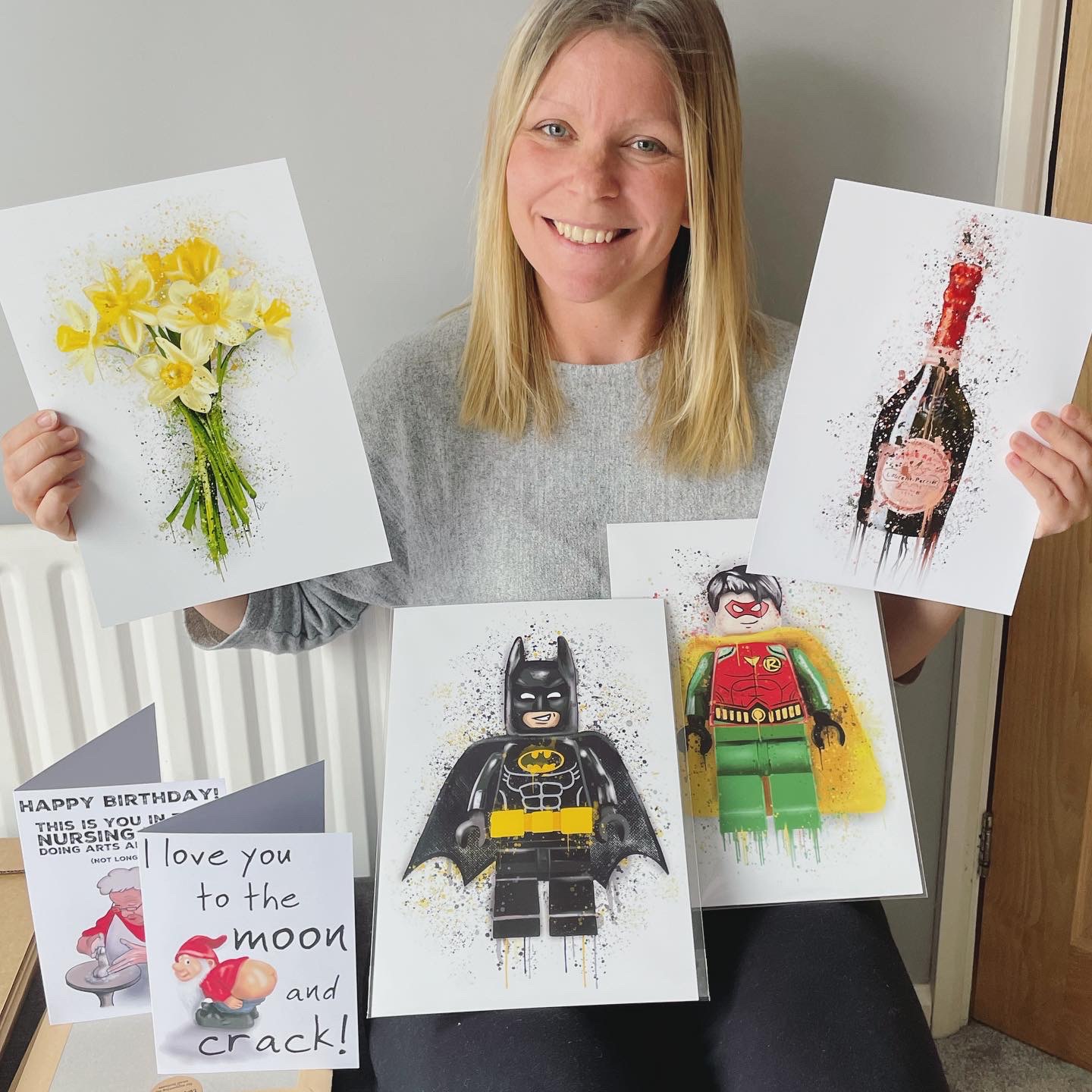Selling Your Art Online: Tips and Tricks
- Rebecca Smith

- Feb 13, 2023
- 3 min read
Updated: Feb 20, 2023
As an artist, I know it can be tough to know where to sell your work and reach new audiences, especially in such a competitive market.
With the rise of e-commerce and online marketplaces, selling art online has become a popular option for artists of all levels and I spent a lot of time researching this topic. Now I'm not someone who has years of experience but here are some of the tips and tricks I've found along the way that I thought I would share.
1. Choose the right platform
There are many websites and online marketplaces where you can sell your art, but not all of them may be right. Some popular options include:
Society6: This site allows you to upload and sell your designs on a variety of products, including home decor, apparel, and accessories.
Etsy: Known for handmade and vintage items, Etsy is also a great place to sell original artwork and prints.
Saatchi Art: This online gallery specializes in fine art and connects artists with buyers all over the world.
Redbubble: Similar to Society6, Redbubble allows you to sell your designs on a variety of products.
Thortful: Not art prints as such but you can sell your artwork as a greeting card via this website. Similar to Moonpig.
Faire: More a wholesale option for selling your work to retailers on a cheaper and larger scale basis to sell on.
Larger retailers such as Wayfair and The Range: Big brands are recognising the importance of supporting small businesses and this is a great way to be affiliated with a household name.
Prodigi: Not an online marketplace as such but a global print on demand company that can be used in conjunction with your website, Etsy, etc allowing you to print your artwork on to any number of products and dropship to customers as and when they order.
I sell my art via my own website (www.picsandsquiggles.com) , Etsy, The Range, Wayfair, Thortful and Redbubble. Take some time to research each platform and choose the ones that are best fit for you and your art. Consider the fees they charge, the types of products they offer, and their target audience.

2. Create a professional online portfolio
Whether you have a dedicated website or just a social media profile, it's important to present your art in the best light possible. Make sure to upload high-quality images of your work, along with detailed descriptions and pricing information. Don't be afraid to show off your process and give potential buyers a behind-the-scenes look at how you create your art.

3. Utilise social media
Social media is a powerful tool for promoting your art and reaching new audiences. Share your work on platforms like Instagram, TikTok, Facebook, and Twitter, and use hashtags to make it easier for people to find you along with trending sounds. You need to embrace the changes on social media in my opinion to ensure you appeal to your target audience and post consistently and engage with your followers by responding to comments. A lot of people get hung up on their social media profile aesthetics and want to use pretty borders on everything but sometimes I think this distracts from the product. If people can't see the detail, they aren't going to buy it.

4. Offer discounts and promotions
Everyone loves a good deal, and offering discounts and promotions can be a great way to get people excited about your art. I have a mailing list on my website and when someone signs up they will receive a 10% discount code. I then offer special offers, first looks and discounts to those on my mailing list throughout the year. Consider running a sale during a slow period too but just be sure to make it clear what the terms and conditions of the promotion are.
5. Ask for feedback and make improvements
Finally, don't be afraid to ask for feedback from your customers. What do they like about your art? What could be improved? What do they want to see? Use this information to make tweaks and improvements to your offerings and make sure you're always putting your best foot forward.
Selling art online can be a challenging and competitive landscape, but with the right approach and a bit of hard work, you can be successful. I'm not making millions but I'm learning everyday and willing to embrace change to grow my small biz. By having a professional online portfolio, utilising social media, offering discounts and promotions, and asking for feedback, I'm hoping I'll be able to do this.









Great tips and tricks BeckY 👌🏻
And a pleasure to read your first blog
I love this, especially Number 1. I didn’t realise there were so many online places to sell art. Thanks for sharing, I’m definitely going to look into this. Thanks Becky x